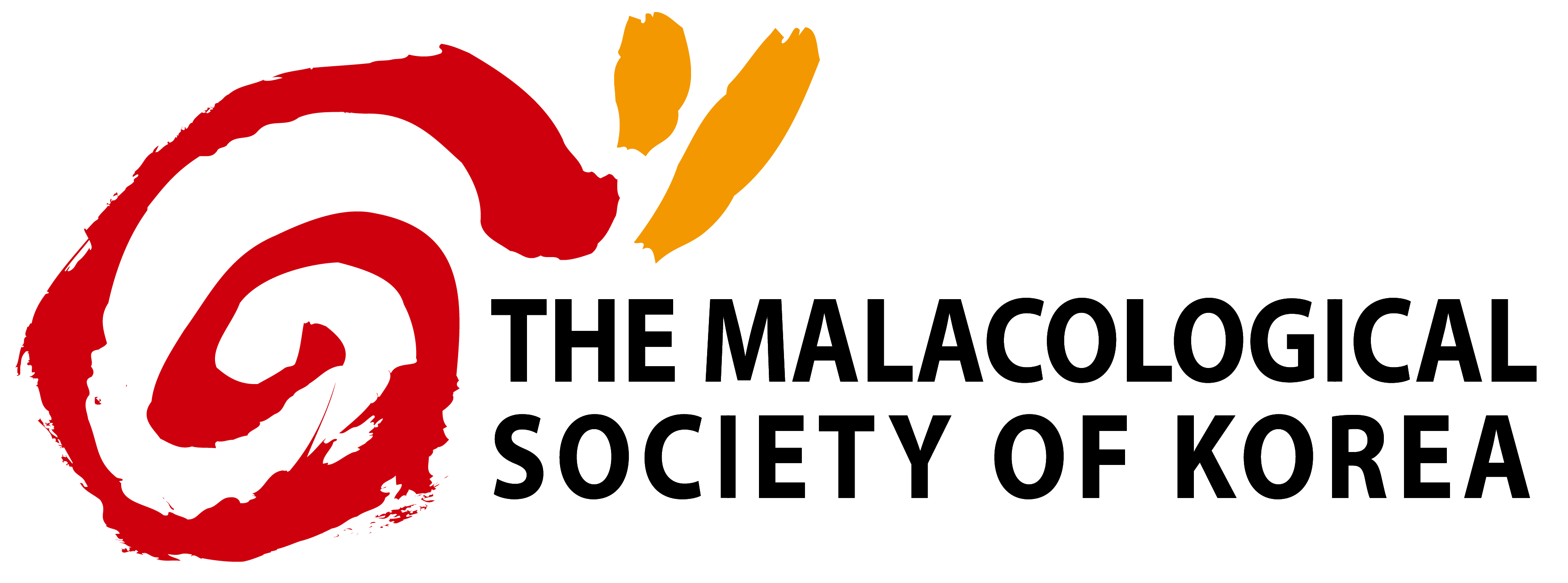open access
메뉴
open access
메뉴 ISSN : 1225-3480
ISSN : 1225-3480
본 연구는 국립수산과학원에서 2004년도부터 시작된 전복육종 프로그램 개발의 일환으로서, 전복 집단에서 개체에 대한 유전적 평가를 바탕으로 우량전복을 효과적으로 선발하기 위해 전복 성장 형질에 대한 초기 성장시기에 있어 각 종별 유전모수를 추정하였다. 실험에 사용한 한국산 북방전복과 둥근전복은 동해안, 남해안, 서해안 및 제주연안의 전국 11 개소로부터 자연산과 양식산으로 구분하여 수집한 후, DNA 분석에 의한 원거리 유연관계를 기초로 F1 세대의 반형매군을 생산하고 채묘후 5개월간 사육을 실시하였다. 이중 임의로 추출한 북방전복 76가계 (3,795 마리), 둥근전복 8가계 (399 마리) 에 대해 각장 (mm), 각폭 (mm) 및 중량 (g) 에 대해 측정을 실시하고, 유전모수는 성장관련형질인 각장, 각폭, 중량, 체형 및 비만도에 대해 추정하였다. 개체에 대한 성장형질에 영향을 미치는 효과분석을 위해 animal model에 의한 선형 혼합모형을 이용하여 SAS 통계 프로그램으로 통계분석을 실시하였다. 또한 EL-REML (restricted maximum likelihood) method를 전산 프로그램화한 REMLF90 (Misztal, 1990) 을 이용하여 다형질 혼합모형으로 유전모수를 추정하였다. 분석모형은 sire와 dam의 수집해역효과, 자연산 혹은 양식산 sire와 dam의 교배 효과, 생산시기 및 사육밀도를 고정효과로 하였다. 분석결과 초기성장시기인 채묘후 5개월령에서의 성장관련 형질은 북방전복에서 평균 ± 표준편차가 각각 각장 15.11 ± 4.04 mm, 각폭 10.64 ± 2.70 mm 및 중량 0.44 ± 0.33 g이었으며, 둥근전복에서는 각각 각장 14.56 ± 4.01 mm, 각폭 10.19 ± 2.67 mm 및 중량 0.40 ± 0.30 g 이었다. 채묘후 5개월령에서의 북방전복의 유전력은 각장, 각폭, 중량, 체형 및 비만도에서 각각 0.76, 0.78, 0.73, 0.20, 0.17로 추정되었다. 둥근전복의 각장, 각폭, 중량, 체형 및 비만도에 대한 유전력은 각각 0.89, 0.87, 0.89, 0.45, 0.01로 추정되었다. 이러한 결과로 보아, 북방전복과 둥근전복 모두 각장, 각폭 중량에서 고도의 유전력이 추정되어 개체선발만으로도 높은 육종효과가 기대되는 것으로 판단된다. 한편 북방전복과 둥근전복의 성장관련형질에 대한 유전상관은 각장과 각폭, 각장과 중량 및 각폭과 중량 간에 각각 0.99, 0.96, 0.96, 0.99, 0.99, 0.98로 추정되어 두 종 모두에서 형질들 간의 높은 유전상관을 나타내었다.
This study was conducted to estimate the general genetic parameters, heritabilities, and genetic and phenotypic correlations on growth-related traits by studying multiple trait animal model in two Korean abalone species, Haliotis discus hannai and H. discus discus. The data was collected from the records of 3,795 individuals produced from 54 sires and 74 dams in Haliotis discus hannai and 399 individuals produced from 7 sires and 7 dams in Haliotis discus discus. The data was evaluated by the Genetics and Breeding Research Center, National Fisheries Research & Development Institute (NFRDI). Genetic parameters were estimated for two abalone species raised in Bukjeju branch, NFRDI, from May 20 to November 1, 2004. The heritability estimates for growth traits of shell length, shell width and body weight obtained from restricted maximum likelihood (REML) were ranging from 0.73 to 0.78 in Haliotis discus hannai, and from 0.87 to 0.89 in H. discus discus. The heritabilities for shell shape and condition factor were ranging from 0.17 to 0.20 in Haliotis discus hannai, and from 0.01 to 0.45 in H. discus discus. Genetic and phenotypic correlations were over than 0.96 between shell parameters and weight in both of abalone subspecies, indicating that breeding for weight gains could successfully be achieved by selecting for shell length.
Falconer, (1989) Introduction to Quantitative Genetics.,
Falconer, D.S, (1996) Introduction to Quantitative Genetics, Prentice Hall, New York
Gall, (1988) Heritability and selection schems of rainbow trout,
Gordon, H.R, (2004) World abalone fisheries and aquaculture update: supply and market dynamics,
Hara, (1992) Increasing growth rate of abalone,
Henderson, (1976) Multiple trait evaluation using relative′s record. Journal of Animal Science,
Henderson, (1986) Recent development in variance and covariance estimation. Journal of Animal Science,
Jonasson, J, (1999) Genetic variation for survival and shell length of cultured red abalone (Haliotis rufescens) in Iceland,
Lucas, T, (2006) Heritability estimates for growth in the tropical abalone Haliotis asinina using microsatellites to assign parentage,
I, (1990) Restricted maximum likelihood estimation of variance components in animal model using sparse matrix inversion and a supercomputer. Journal of Dairy Science,
M, (1978) Estimation of average heterozygosity and genetic distance from a number of individuals. Genetics,
D, (1971) Recovery of inter-block information when block sizes are unequal. Biometrika,
Su, G.S, (1996) Genetic and environmental variation of body weight in rainbow trout (Oncorhynchus mykiss),
Vandeputte, M, (2004) Heritability estimates for growth-related traits using microsatelite parantage assignment in juvenile common carp (Cyprinus carpio L.),
Viana,M.T, (2002) Abalone Aquaculture, An Overview,
